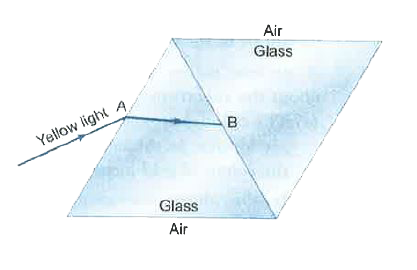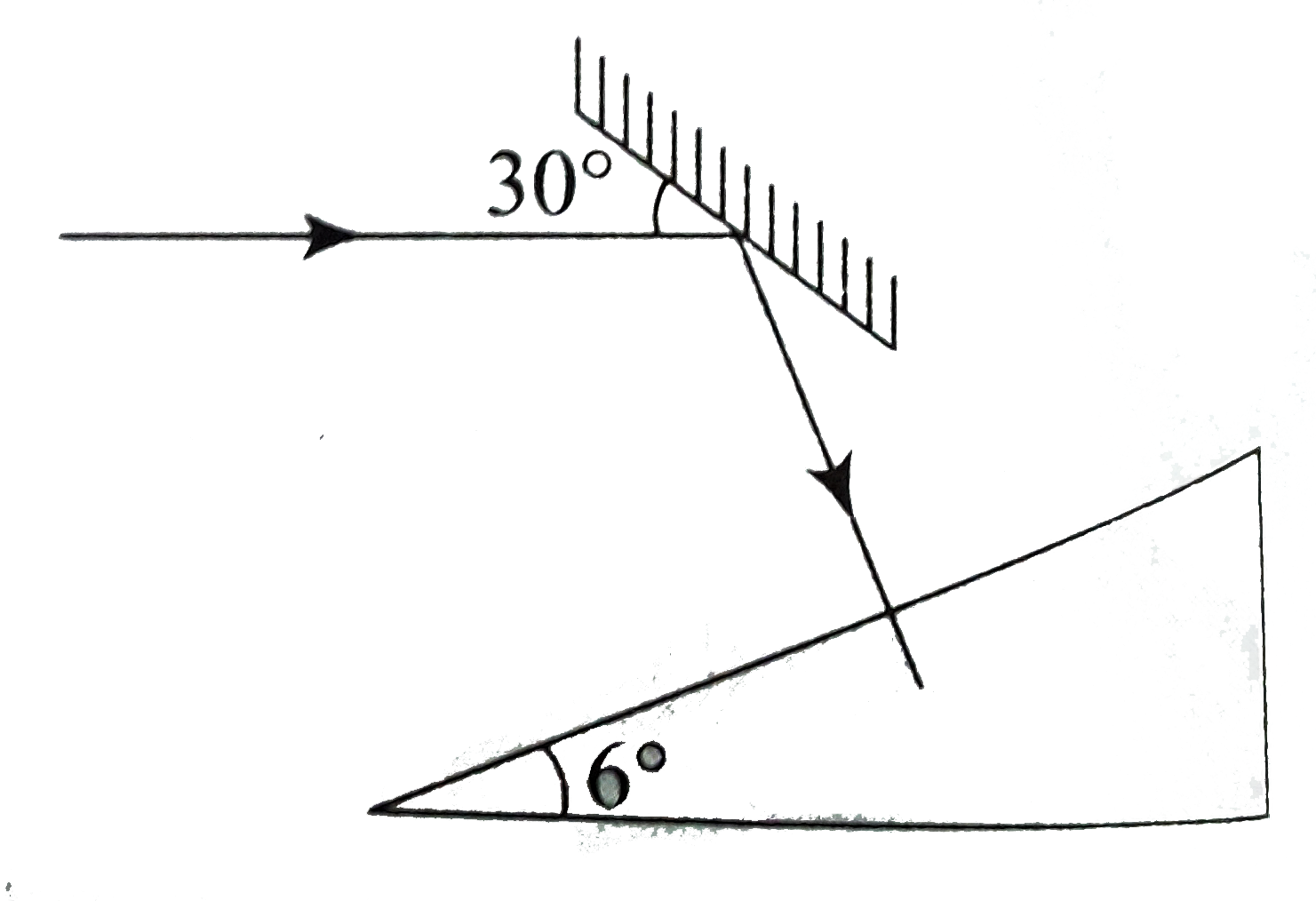An identical prism is stuck to the first prism using a transparent adhesive with the same refractive index as the glass. This is shown in figure. In this figure, draw the path of the ray after it has reached B and until it has passed into the air again.

Topper's Solved these Questions
- PRACTICAL BASED QUESTIONSBOOK - VK GLOBAL PUBLICATIONCHAPTER - PRACTICAL BASED QUESTIONSEXERCISE - Experiment 14
6 Videos
- PRACTICAL BASED QUESTIONSBOOK - VK GLOBAL PUBLICATIONCHAPTER - PRACTICAL BASED QUESTIONSEXERCISE - Experiment 15
4 Videos
- PRACTICAL BASED QUESTIONSBOOK - VK GLOBAL PUBLICATIONCHAPTER - PRACTICAL BASED QUESTIONSEXERCISE - Experiment 12
6 Videos
- PERIODIC CLASSIFICATION OF ELEMENTS BOOK - VK GLOBAL PUBLICATIONCHAPTER - PERIODIC CLASSIFICATION OF ELEMENTS EXERCISE - PROFICIENCY EXERCISE (LONG ANSWER QUESTIONS)
3 Videos
- VALUE-BASED QUESTIONSBOOK - VK GLOBAL PUBLICATIONCHAPTER - VALUE-BASED QUESTIONSEXERCISE - EXERCISE (CHAPTER-16) MANAGEMENT OF NATURAL RESOURCES
9 Videos
Similar Questions
If a glass prism is kept in a liquid of the same refractive index as that of glass, will the ray of light bend (Fig. B)? Complete the path of the ray of light.

View SolutionWhat is the refractive index of the material of the glass prism shown in the figure, if a ray of light incident normally at the face AB emerges along the face AC?

View Solution
Knowledge Check
There is a equilateral prism of refractive index 3 on which a light ray is incident normally on one face as shown in the figure. Find the length of the path traveled by the light ray inside the prism.
 A√3L2B√3LC3L/2DL
A√3L2B√3LC3L/2DLFind the net deviation produced in the incident ray for the optical instrument shown in figure. (Take refractive index of the prism material as 2.)
 A66∘CWB66∘ACWC54∘ACWD54∘CW
A66∘CWB66∘ACWC54∘ACWD54∘CW
A ray PQ is incident normally on the face AB of a triangular prism of refracting angle of 60∘, made of a transparent material of refractive index 2√3, as shown in the figure. Trace the path of the ray as it passes through the prism. Also calculate the angle of emergence and angle of deviation.

View SolutionFind the angle of deviation suffered by the light ray shown in figure. The refractive index μ=2.0 for the prism material.
View SolutionFind the angle of deviation suffered by the light ray shown in figure. The refractive index mu = for the prism material.

View SolutionA ray PQ is incident normally on the face AB of a triangular prism of refracting angle 60°, made of a transparent material of refractive index 2√3 , as shown in Fig.
Trace the path of the ray as it passes through the prism. Also calculate the angle of emergence and angle of deviation.
View Solution(a) Draw the ray diagram showing refraction of ray of light through a glass prism. Derive the expression for the refractive index n of the material of prism in terms of the angle A ray angle of minimum deviation δm
(b) A ray of light PQ enters an isosceles right angles prism ABC of refractive index 1.5 as shown in figure .

(i) Trace the path of the ray through the prism .
(ii) What will be the effect on the path of the ray if refractive index of the prism is 1.4 ?
View SolutionThere is a equilateral prism of refractive index 3 on which a light ray is incident normally on one face as shown in the figure. Find the length of the path traveled by the light ray inside the prism.

View Solution

